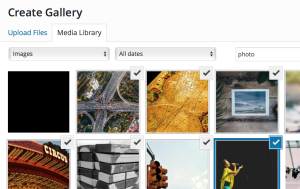7 Ways to Improve Your Responsive Web Design Approach
Key Takeaways
- Responsive Web Design (RWD) should be implemented from the start, not as an afterthought, to ensure the best user experience across all devices. It is not just about ticking business strategy objectives but about creating a seamless and efficient user experience.
- The design process should start with small-screen considerations, then work upwards using fluid layouts and media query breakpoints. It’s important to avoid stereotypes about device usage and instead focus on user needs and context.
- Performance is paramount in RWD. It should never compromise the website’s functionality or content, and should consider additional mobile features like geo-location and offline support. RWD should also be optimized for load times, especially on mobile networks.
If your users are demanding a toggle to switch between desktop and mobile layouts, perhaps your Responsive Web Design hasn’t been as successful as you hoped. Here are seven considerations before you jump on the RWD bandwagon…
1. Why use Responsive Web Design?
RWD is a cheap option; you can re-purpose your existing desktop layout to ensure it works well on a smaller mobile device. If you’re developing a new site, there are few reasons not to use RWD.
However, are you considering RWD because it’s an inexpensive way to tick a few business strategy objectives? You can certainly implement a mobile layout within a few hours but will it be useful? It’s usually obvious when a responsive design has been added as an afterthought. It may be better to stick with a good desktop layout than undermine your online presence.
2. Consider the Context, but…
…avoid stereotypes.
Historically, designers considered desktop viewers to be static and smartphone users to be roaming. A train company would typically highlight ticket buying on desktop devices and station directions on mobile devices. There are a couple of problems with this approach:
- the boundaries have become blurred. People use whatever device is practical e.g. they may surf the net on a phone while watching TV.
- RWD reveals nothing about the context. Device resolution is a crude assumption especially when you consider the high-density displays offered by modern phones and tablets.
If static and roaming users have different contexts, it may be preferable to provide separate mobile sites or apps which have dedicated functions.
3. Distill Your Content
Why do people visit your site? What’s important to those users? What’s their typical journey? Without these answers, you’ll be tempted to throw everything on the home page. That may be possible on a large display but you’ll struggle when switching to a mobile layout.
The best option: think small-screen first, then…
4. Design Upwards
Once you have a design for the smallest practical screen, you can work upwards in a series of media query breakpoints.
While there are no strict rules, breakpoint steps should not be large — perhaps no more than 200 pixels. However, each step need not be a major re-flow such as additional columns; it could be a font-size change, floating images or another simple tweak.
5. Keep it Fluid
Ideally, your design should be fluid between breakpoints — not fixed. While fixed layouts are easier to comprehend and code, they’re too fragile for RWD (refer to Is Your Responsive Web Design too Fragile?)
Ideally, even your media queries should use proportional units such as %, em and rem instead of pixels.
6. Never Compromise
RWD should never be used to offer a watered-down version of your website. In some cases, you should consider additional facilities on mobile devices such as geo-location and off-line support. Keep it simple and easy to use:
- don’t use browser sniffing
- don’t disable zooming
- don’t hide content.
7. Only Performance Matters
RWD may be cheap to implement but it should be planned from the start. Applying RWD to a site serving 1Mb+ pages will never result in an optimal experience on devices operating over a mobile network.
Responsive Web Design is one of the most important technologies to appear in recent years. But using RWD badly may be worse than not offering it at all.
Frequently Asked Questions about Responsive Web Design
What is the importance of responsive web design in today’s digital world?
In today’s digital world, where users access the internet from a variety of devices, responsive web design is crucial. It ensures that your website looks and functions well on all devices, regardless of their screen size. This enhances user experience, as they can easily navigate your site and find what they’re looking for. Moreover, Google also prioritizes mobile-friendly websites in its search results, so having a responsive design can improve your site’s SEO.
How does responsive web design improve user experience?
Responsive web design improves user experience by providing a seamless interaction between the user and the website. It automatically adjusts the layout, images, and functionalities of a website to fit the screen size of the device being used. This means users won’t have to zoom in or scroll horizontally to view content, making navigation easier and more intuitive.
What are the key elements of responsive web design?
The key elements of responsive web design include a flexible grid system, flexible images, and media queries. A flexible grid system allows the layout to adjust based on the screen size. Flexible images are images that can scale and resize to fit the screen. Media queries allow the website to gather data about the visitor’s device and apply different CSS styles based on that information.
How does responsive web design affect SEO?
Responsive web design has a significant impact on SEO. Google has stated that it prioritizes mobile-friendly websites in its search results. Therefore, having a responsive design can improve your site’s ranking. Moreover, a responsive design reduces the risk of running into duplicate content issues that can occur with separate mobile and desktop sites.
What are some best practices for responsive web design?
Some best practices for responsive web design include designing for mobile first, keeping the design simple and clean, using a flexible grid system, making images responsive, and testing your design on various devices and screen sizes. It’s also important to consider the user’s experience and ensure that your site is easy to navigate on all devices.
How can I make my website responsive?
Making a website responsive involves using CSS and HTML to resize, hide, shrink, or enlarge a website, so it looks good on all devices. You can use a flexible grid layout, flexible images, and media queries to achieve this. There are also many responsive design frameworks available, like Bootstrap, that can make the process easier.
What is the difference between adaptive and responsive design?
While both adaptive and responsive design aim to optimize websites for different devices, they do so in different ways. Responsive design uses flexible layouts that adjust to the screen size, while adaptive design uses static layouts that are designed for specific screen resolutions.
Can I use templates for responsive web design?
Yes, there are many responsive web design templates available that can help you create a mobile-friendly website. These templates are pre-designed and coded to be responsive, so you just need to customize them to fit your content and branding.
How can I test if my website is responsive?
There are several ways to test if your website is responsive. You can resize your browser window to see if the layout adjusts, use the device mode in Chrome’s developer tools, or use online tools like Google’s Mobile-Friendly Test.
What are some common mistakes in responsive web design?
Some common mistakes in responsive web design include not designing for mobile first, using too many complex elements that can slow down your site, not testing your design on actual devices, and not considering the user’s experience on different devices.
Craig is a freelance UK web consultant who built his first page for IE2.0 in 1995. Since that time he's been advocating standards, accessibility, and best-practice HTML5 techniques. He's created enterprise specifications, websites and online applications for companies and organisations including the UK Parliament, the European Parliament, the Department of Energy & Climate Change, Microsoft, and more. He's written more than 1,000 articles for SitePoint and you can find him @craigbuckler.
Published in
·Business·Entrepreneur·Entrepreneurship·Entrepreneurship·Freelancing·Marketing·September 16, 2015

